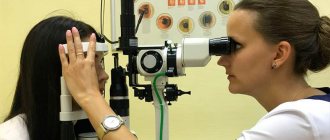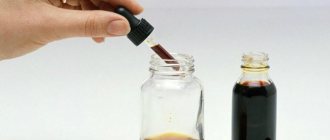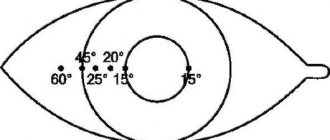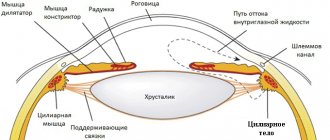Determination of daily urine volume
Determination of daily urine volume
Daily diuresis is the total amount of urine excreted by a person in 24 hours, taking into account the fluid consumed during this period. This test is necessary to determine normal kidney function.
For analysis, the patient must collect urine in a special container throughout the day. It is recommended to store this container in a cool, dry place until transport to the laboratory.
The composition of urine includes water and breakdown products of chemicals such as protein, creatinine, sodium, etc.
If the level of substances exceeds the permissible norm or the urine contains foreign chemical elements, this may be a sign of kidney disease or other ailment.
Analysis of the daily volume of urine gives the doctor the opportunity to diagnose pathology.
Other methods such as ultrasound, computed tomography, biopsy and angiography of the renal arteries are also used to diagnose kidney disease.
Principles of the urinary system
Together with food, a person receives valuable substances that feed the body with energy. After the body receives nutrients, part of the breakdown products is excreted through the excretory organs, the other part remains in the blood and is purified through the kidneys.
The urinary system regulates the salt and water balance in the body and helps maintain it at the proper level. Urea is formed as a result of the breakdown of animal and plant proteins and is then excreted from the body through the kidneys.
The kidneys play an important role in regulating blood pressure and producing the glycoprotein hormone erythropoietin, without which the formation of red blood cells is impossible.
The urinary system and its functional role
- The kidneys are a paired organ that is located in the lumbar region under the ribs on both sides of the spine. The kidneys rid the body of toxins, which are excreted in the urine and provide optimal levels of salts and other substances. Produced in the kidneys, erythropoietin forms bone marrow red blood cells. The kidneys are involved in regulating blood pressure.
- A nephron is a functional and structural unit of the kidneys. Consists of the renal corpuscle, responsible for filtration, and tubules. In the nephron, when urea and other substances enter, primary urine is formed.
- The ureters are two hollow tubes that connect the kidneys to the bladder to transport urine. Disruption of this process in the form of urine flowing from the bladder to the kidneys can cause infection.
- The bladder is a triangle-shaped muscular organ located at the bottom of the abdominal cavity. It is a storage reservoir for urine before its direct removal from the body. To retain urine, the walls of the bladder can stretch and, conversely, contract to push urine out through the urethra.
- Sphincters are a pair of muscle rings that create obstacles to the outflow of urine.
- The nerves of the bladder perform the function of notifying the need to empty the organ.
- The urethra is a channel for removing urine from the body.
Useful information about urine:
- On average, an adult accumulates between 700 and 2000 ml of urine per day. The amount directly depends on the volume of liquid and food consumed during the day.
- In a healthy person, urine does not contain microorganisms, fungi, viruses and is sterile.
- During the night, half of the total volume of urine excreted per day is formed.
- There is a protective coating on the walls of the bladder that prevents the growth and development of microorganisms on it.
Indications for daily diuresis
Daily urine output is a quick test for diagnosing renal dysfunction. It is prescribed to determine the amount of creatinine that passes through the kidney filter, as well as to measure the amount of protein lost during the day, as well as hormonal secretion and minerals.
Like any other organ, pathologies can be detected in the kidneys.
Kidney diseases can be both acute and chronic.
Acute pathology appears instantly and can be cured.
Chronic diseases take a long time to develop and can cause kidney failure. The causes of pathologies, as well as their symptoms and treatment methods, may be different.
Diseases that cause kidney damage:
- diabetic nephropathy – kidney damage in people with diabetes;
- Essential hypertension – high blood pressure causes chronic kidney damage;
- systemic lupus erythematosus is a chronic inflammatory disease that provokes damage to the skin, kidneys, joints and nervous system;
- infectious diseases of the urinary tract;
- difficulty or blockage of urine flow;
- hereditary nephritis or Alport syndrome - causes deafness and blindness, kidney damage;
- nephrotic syndrome is a kidney pathology in which protein appears in the urine, protein levels in the blood decrease, and cholesterol levels increase. Accompanied by swelling;
- polycystic kidney disease - a genetic disease characterized by the formation of cysts with fluid in the kidneys;
- cystinosis is a hereditary pathology in which an abnormal amount of a protein component, cystine, is formed in the cytoplasm of cells;
- interstitial nephritis - inflammation of the structure of the kidney tissue and tubules;
- pyelonephritis is an infectious kidney inflammation that affects the kidney tissue and pelvis.
As a diagnosis, daily diuresis is prescribed in combination with other procedures. In addition to the above, there are other reasons for prescribing a 24-hour urine test, which can be identified by the attending physician.
Disturbances in daily diuresis that affect the result.
As a rule, the procedure for collecting 24-hour urine is simple, safe and does not require outside intervention. Violation of the basic rules for collecting urine can significantly affect the initial result of the analysis. For example:
- if not all urine excreted in the specified period of time was collected;
- if you went outside the day and collected excess urine;
- if for some reason urine spills from the container;
- violation of storage conditions during the procedure;
- taking medications and eating foods that should be excluded during the analysis.
Preparation before taking a 24-hour urine test.
- Consultation with the attending physician about the procedure and the opportunity to ask questions.
- Your doctor may set a specific time for you to start collecting urine.
- For your convenience, during daily diuresis, it is recommended to spend this day at home.
- If there is a possibility of pregnancy, notify your doctor.
- You must provide your doctor with complete information about all the medications and vitamins you are taking.
- Individual recommendations for preparing for the procedure can be prescribed in accordance with the patient’s health condition.
Daily diuresis can be prescribed in combination with other medical procedures or on an outpatient basis.
The procedure for collecting urine during daily diuresis:
- You will first be given a container for analysis. Most often, a special brown plastic container is used. It is most convenient to use a urinal or bedpan to collect urine.
- It is recommended to start collecting urine in the morning, but you can start at a time convenient for you. The main thing is to strictly adhere to the 24-hour collection schedule.
- There is no need to save urine during the first morning urination session. Start counting from next time.
- It is recommended to store the collected urine for 24 hours in a cool place, possibly in the refrigerator.
- It is advisable to carry out the last urine collection at the same time as the first.
- Upon completion of the procedure, the urine collected in the container must be transported to the laboratory.
As a rule, there are no restrictions or rules for the patient after taking a 24-hour urine test. On an individual basis, the doctor may prescribe repeated daily diuresis.
Measuring daily urine output and determining water balance
Daily diuresis is the total amount of urine excreted by the patient during the day.
Daily diuresis in adults ranges from 800 ml to 2000 ml and depends on age, temperature and humidity of the environment, nutritional conditions, physical activity and other factors, it should be 75-80% of the amount of fluid drunk, 20-25% of the fluid is excreted from then, breathing, stool.
Daily water balance is the ratio between the amount of fluid introduced and the amount of fluid removed from the body during the day. The liquid contained in fruits, soups, vegetables, etc., as well as parenterally administered solutions, is taken into account.
Indications:
1) monitoring a patient with edema;
2) identifying hidden edema, increasing edema and monitoring the effect of diuretics.
Workplace equipment:
1) graduated glass container for collecting urine;
2) water balance sheet.
Preparatory stage of the manipulation:
— Make sure that the patient will be able to keep track of fluids (for seriously ill patients, a nurse will take the track)
— Explain to the patient the need to adhere to the usual water, food and physical regime.
— Make sure that the patient has not taken diuretics for 3 days before the study.
— Provide detailed information about the order of entries in the water balance sheet. Make sure you can fill out the sheet.
— Explain the approximate percentage of water in food (solid foods can contain between 60 and 80% water).
The main stage of the manipulation:
— Explain that at 600 it is necessary to release urine into the toilet.
— Collect urine after each urination into a graduated container and measure urine output.
— Record the amount of fluid released on the accounting sheet.
— Record the amount of fluid entering the body on a record sheet.
— Explain that it is necessary to indicate the time of intake or administration of fluid, as well as the time of fluid release on the water balance sheet during the day, until 600 the next day.
— At 600 the next day, hand over the registration sheet to the nurse.
The final stage of the manipulation:
— Determine how much fluid should be excreted in the urine. Calculation of water balance is determined by the formula: amount of fluid taken x 0.8 (80%) = amount of urine that should be released normally.
- Compare the amount of fluid released with the amount of fluid calculated in (normal).
— Consider the water balance negative if less fluid is released than calculated (normal).
- Consider the water balance positive if more fluid is excreted than calculated (this may be the result of the action of diuretic drugs, the use of diuretic foods, the influence of the cold season).
Note: a positive water balance indicates the effectiveness of treatment and the resolution of edema. A negative water balance indicates an increase in edema or ineffectiveness of the dose of diuretics.
Prepare for the urine test correctly! Prevent deviation from the norm!
Codes and names of studies:
- General urine analysis;
- Urinalysis according to Nechiporenko.
Preparation rules
To obtain reliable results, the following conditions must be met:
- It is not recommended to consume on the eve of the study (10-12 hours before): alcohol, spicy, salty foods, foods that change the color of urine (for example, beets, carrots);
- If possible, avoid taking diuretics;
- Before taking the test, perform a thorough toileting of the external genitalia;
- It is not advisable to take the test for women during menstruation.
On the eve of the study, it is advisable to obtain a kit with a disposable, vacuum system for collecting and transporting urine with instructions from the administrator of the medical center. The biomaterial should be delivered in a test tube with a preservative within a day.
Urine collection instructions when using a preservative urine collection and transport kit
- Unscrew the container lid.
- After releasing the first portion of urine into the toilet, without interrupting urination, fill the container to half the volume.
- Close the container lid tightly.
- Insert the holder into the container through the neck (Fig. 1). If urine remains in a container for a long time, it is necessary to mix it using a holder.
- Insert the test tube into the holder. Press the test tube so that the needle of the holder pierces the rubber stopper in the lid of the test tube (Fig. 2). Immediately after this, the test tube will begin to fill with urine.
- After urine stops flowing into the test tube, remove the test tube from the holder (Fig. 3).
- Next, you need to turn the tube over several times to better mix the urine with the preservative.
- in a test tube delivered to the laboratory during the day, transported at room temperature.
| Fig.1 | Fig.2 | Fig.3 |
Instructions for collecting urine in a container without a preservative
If you collect urine in your own container, purchased, for example, at a pharmacy, you should perform the following steps:
- Remove the lid from the prepared container;
- After releasing the first portion of urine into the toilet, without interrupting urination, fill the container to half the volume ;
- Close the lid tightly;
- Deliver the container to the laboratory as soon as possible from the moment of collection (no more than 2 hours).
Get tested with us! Our prices are lower. Make sure!
Get a -15% discount on tests Read more...
We have no hidden fees!
Call!
| E single number: 426-15-05 | ||
| St. Petersburg, Bolshevikov Ave., building 30, bldg. 2 (Nevsky district, metro station "Ul. Dybenko", next to Kudrovo) | ||
| St. Petersburg, Kolpino, st. Communes building 23, m. Kupchino | ||
DID NOT YOU FIND WHAT YOU WERE LOOKING FOR?
1. USE THE CONVENIENT SITE SEARCH!
2. OR ASK A QUESTION TO THE DOCTOR ON THE FORUM (24 HOURS)
3. OR JUST CALL US! M multi-channel single number: 426-15-05











